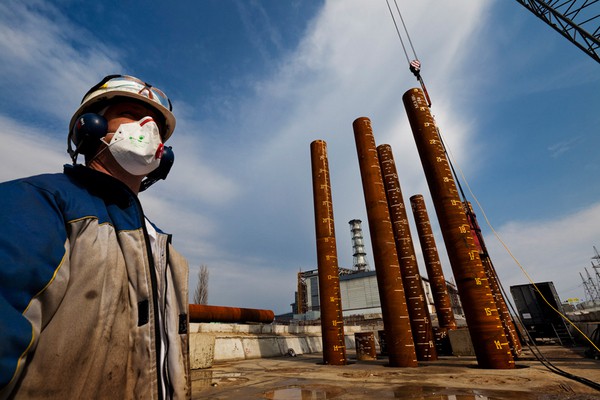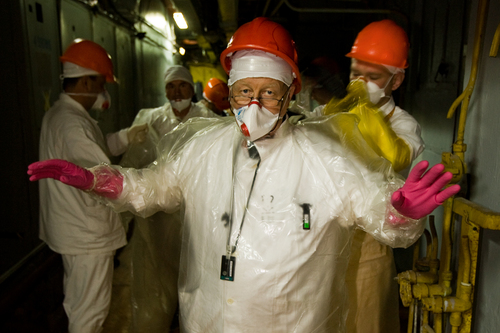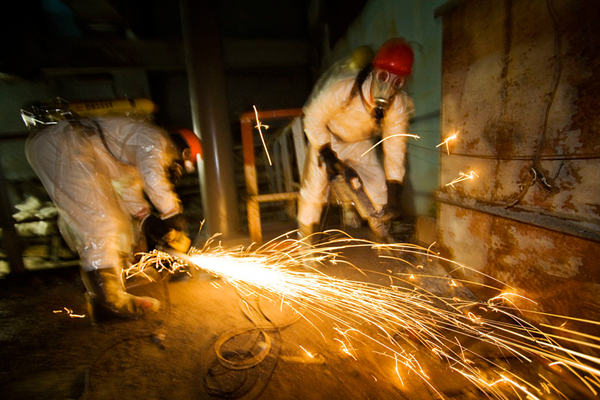Share
Success In Crowdfunding: The Long Shadow of Chernobyl
On April 26, 1986, a reactor at the Chernobyl Nuclear Power Plant in the Ukraine exploded after a failed safety test, releasing a plume of highly r...

On April 26, 1986, a reactor at the Chernobyl Nuclear Power Plant in the Ukraine exploded after a failed safety test, releasing a plume of highly radioactive smoke into the atmosphere. Officials tried to downplay the seriousness of the event at the time, but it’s recognized to be the worst nuclear power plant accident in history.
20 years later, National Geographic Magazine photographer Gerd Ludwig went on assignment to photograph the nuclear reactor and its disastrous, widespread aftermath. The adjacent city, Pripyat, was evacuated after the accident and has since become an eerie ghost town. Those who once lived in the area are at high risk for cancer-related illnesses, and it’s said that thousands of people have already died as a consequence of the radioactive exposure.
On the eve of Chernobyl’s 25th anniversary, Gerd felt compelled to return to the plant and capture more images of its current state and cleanup efforts. But traditional media outlets that would have funded his trip weren’t interested. It was then that Gerd turned to Kickstarter.
Tell me about the impetus behind your Kickstarter project, The Long Shadow of Chernobyl
I shoot most of my work for National Geographic Magazine and it was on assignment for them that I went to Chernobyl for the first time in the early 1990s. In 2005 I returned for a substantial amount of time for a story that ran in National Geographic at the 20th anniversary of the accident. Ever since my first visit the Chernobyl accident, its aftermath and the use of nuclear power have remained close to my heart. On the eve of the 25th anniversary, I approached several magazines for assignments that would send me back. By then, I had already undertaken several trips to Chernobyl and to the exclusion zone around it, and I had ventured deeper into the nuclear reactor than any other still photographer when, on several occasions, I accompanied a group of workers that were only allowed access for one shift of 15 minutes per day – despite wearing heavy protective gear and gas masks. So I considered myself to be knowledgeable enough and have the necessary connections to propose a follow-up story to magazines. National Geographic denied me, understandably so, because they ran the story only five years prior. But no other magazine seemed interested in the subject either.
Print publications are under a lot of pressure to make up for lost circulation, and subsequently many of them have turned to sensationalism and celebrity stories. But I think that many in print media underestimate the hunger for issue driven stories.

Photo by Gerd Ludwig
When did you decide to turn to Kickstarter to fund your project?
Well, I wanted to go back to Chernobyl before the 25th anniversary and update the story, so I discussed my options with my studio manager, Brandon who said: “Hey, have you ever looked into Kickstarter and crowdfunding?” I was not familiar with the subject then, but once I learned more about it, I found it very intriguing. At that time it looked like mostly younger photographers were using it. But I concluded, “Why should I not learn from these fresh movements in photography?” I never want to be one of those old farts saying, “This is not for me.” So I wrote a Chernobyl project proposal for Kickstarter and it got approved within just a few days – we started shooting our video for Kickstarter immediately.
How did you decide on the fundraising goal?
As a National Geographic photographer, I’m used to fashioning precise budgets and from past experiences in Ukraine I had a sense of the expected expenses. Although, in retrospect I feel, I was too careful – I was asking for $12,000 which I knew would only cover 50% of my expenses in the field. The bulk of the expenses was going to go to transportation. The Chernobyl administration now charges $600 per day for a car and driver, simply because they can. There is neither public nor private transportation in the Exclusion Zone and the only way to get around is in official cars.

Photo by Gerd Ludwig
How did you determine the incentives for backers?
I found it important to create rewards for every size pocketbook. If someone had only $10 bucks available, he gets mentioned on every exhibit for 5 years, and for $25 one got a postcard. Those who donated $45 got a poster. I had additional copies of my book (Broken Empire: After the Fall of the USSR) available. So if somebody donated $100 he got a signed copy. You need to go up the ladder so that you have something for everyone.
Your Kickstarter video was an important component–what went into producing it?
We taped it here in the studio ourselves using a Canon 5D MKII, with all the professional care. We found that the serious and professional projects on Kickstarter seemed to be the most successful. You are asking for people’s help, so you need to show them that you take your project serious and how much you care. I think it’s also important to show yourself in the video – people are more likely to relate when they see the person they are donating to.
What else did you do to promote your campaign?
We immediately set up a separate project website and Facebook page with the same name, “The Long Shadow of Chernobyl”. We would publish news and links to our Kickstarter page there, so we could spread the word about the project with a simple click of the “like” button. We also released a small number of images for blogs and online publications like The Huffington Post. Immediately the project was mentioned on websites from Switzerland to Poland to Australia–you name it. It went really far, really fast.

Photo by Gerd Ludwig
What were the other keys to success in hitting your goal?
One big boost was being featured on Kickstarter’s “project of the week”, which they send out to all their email subscribers. This had the added benefit of reaching a new audience for the photographs.
Unfortunately, the Fukushima nuclear disaster happened upon my arrival in Ukraine. Of course, the timing and disaster was tragic, but it did drive a lot of new traffic to the project. It also made the project more immediate. In the beginning everybody said, “Oh, Chernobyl is an old story, nuclear accidents can’t happen anymore.” With the Fukushima disaster occurring in a country touting nuclear safety suddenly, people realized that the very same nuclear safety epidemic still exists today.

Photo by Gerd Ludwig
What was exceptionally hard about using Kickstarter?
I underestimated the time that one needs to invest in a Kickstarter project. Somebody may hope that it is a way to make a quick buck. Not at all! Dealing with hundreds of rewards was incredibly time consuming: choosing images for postcard and poster, have them printed, sign them, find the right shipping materials, package all the poster, books and prints, write hundreds of shipping labels, and finally ship everything. And what I did not envision was having so many people from overseas donating to my project. I made a huge mistake by underestimating the shipping expenses. We had to send stuff all over the world, to the Indonesia, Norway, Pakistan, New Zealand, Brazil, and many more countries.
Do you think that Kickstarter is more or less suited for an emerging photographer versus an established one?
I think it’s suited for both. The most important point is that you explain in your video that you can only get your project financed through crowdfunding, and no other way. In my case, it was because the traditional media wasn’t interested in the subject. But the reaction of the public showed that there was substantial interest. Whether you’re an established or young photographer, explain your cause, share an outline for how you intend to spend the funds, and present the project in a captivating manner. And of course, credentials help. Those could be published stories, previous projects you have successfully completed, or the first images of a future project.
Any other tips for photographers looking to crowdfund their campaigns?
Nothing additionally, but let me sum it up: Show people who they are donating to; introduce yourself and speak to your audience – using video. Treat your potential donors with respect. When the public comments on the project site, you owe them a certain amount of time to respond to their concerns. It’s also important to carefully calculate ahead of time all costs for packaging and shipping the rewards, specifically when you’re sending abroad. Also, be aware that so far the only way of donating to Kickstarter is via credit card online, and not everyone around the world is used to paying this way.

Photo by Gerd Ludwig
Tell us about the current state of your project.
I hope that meaningful crowdfunded projects like Chernobyl will make the traditional media aware that there is an interest in serious photojournalism. I’ve found it really motivating that people are willing to open their pocketbooks for real issues.
Some of the resulting images from the project were exhibited in April 2011 at the European Bank for Reconstruction and Development (EBRD) Headquarters. As EBRD is in charge of collecting money for the cleanup and new construction at Chernobyl, they were willing to show the most emotionally charged images. The cost for cleanup and construction of the New Safe Confinement at the Chernobyl nuclear reactor is $2.2 billion and there still is a funding gap. Also in May 2011, the images were shown at the Horizonte Photo Festival in Germany to help to focus on environmental awareness. Currently I am working on an iPad App about Chernobyl. Due to the Kickstarter donations, I will be able to release it at an affordable price.



